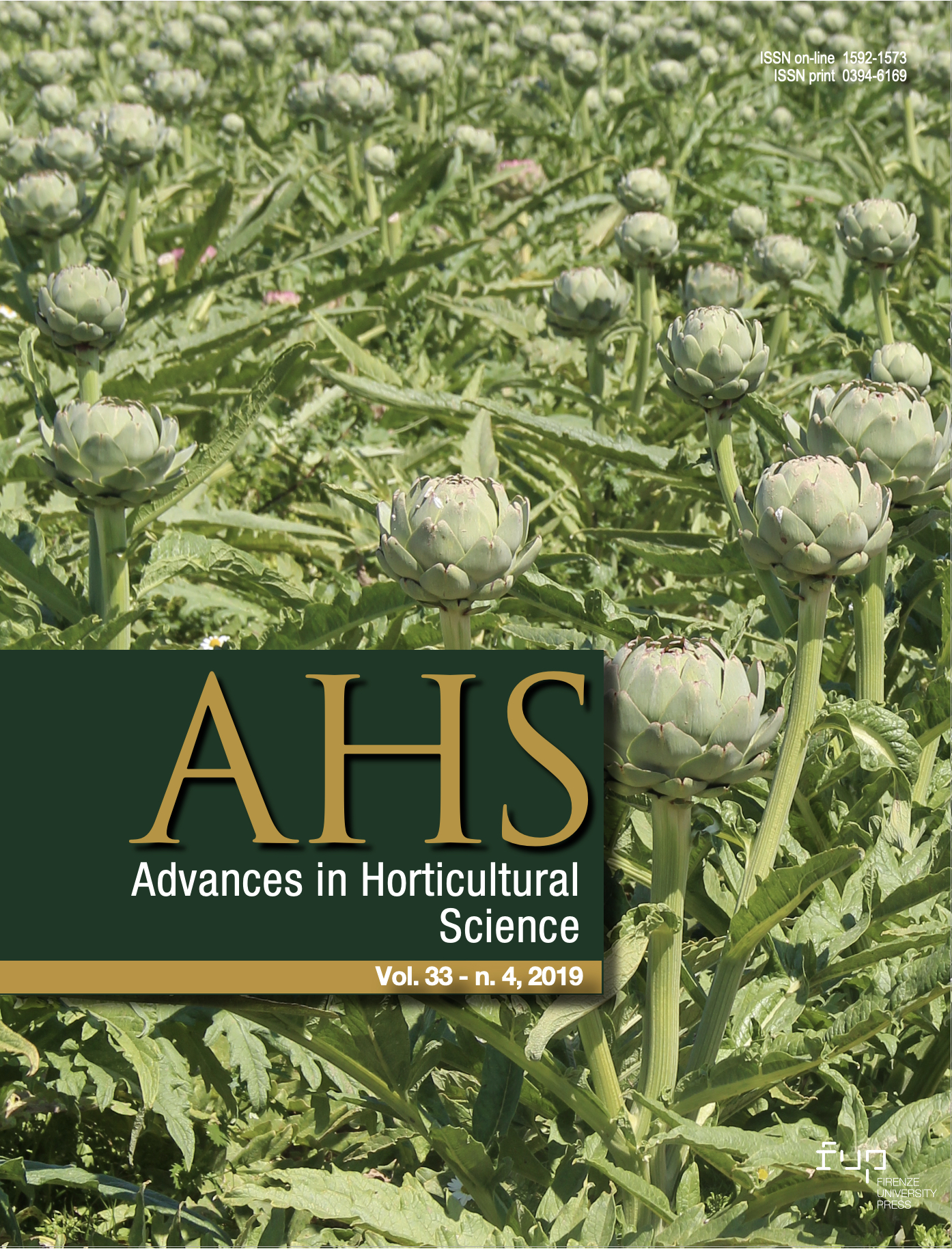Published 2020-02-26
Keywords
- abiotic stress,
- electrolyte leakage,
- specific leaf area,
- stem diameter,
- stem length
- stomata conductance,
- transpiration rate ...More
How to Cite
Abstract
The growing demand for both fresh and dry figs worldwide is due to its richness in mineral compounds (i.e. iron and copper) and polyphenols. Considering the position of Iranian cultivars in global fig market, the present study examined the growth and photosynthetic rate of commercial fig cultivars (i.e. ‘Sabzʼ, ‘Siyahʼ, ‘Shah Anjirʼ, ‘Atabakiʼ, ‘Kashkiʼ, ‘Matiʼ and ‘Bar Anjirʼ) exposed to six salt treatments corresponding to the following electrical conductivities (EC): 0.5, 2, 4, 6, 8 and 10 dSm-1. The results indicated a decrease trend of stem length, stem diameter and leaf number in salt-exposed plants. The electrolyte leakage and protein content in all cultivars followed an ascending trend. The specific leaf area, relative water content, photosynthetic indices and nitrogen content followed a decreasing trend according with increasing salinity. The ‘Siyahʼ and ‘Sabzʼ, as the most salt-tolerant cultivars, had the maximum leaf abscission, the lowest transpiration rate and leaf water content under salt condition, compared to all other tested cultivars. Moreover, they had the most leaf succulence and leaf dry matter content and the lowest specific leaf area, which related to the balance between growth ratio and osmotic regulation under salt conditions. The ‘Shah Anjirʼ, as the most salt-sensitive cultivar, could not balance transpiration rate and leaf water content under salt treatment higher than 4 dSm-1.






